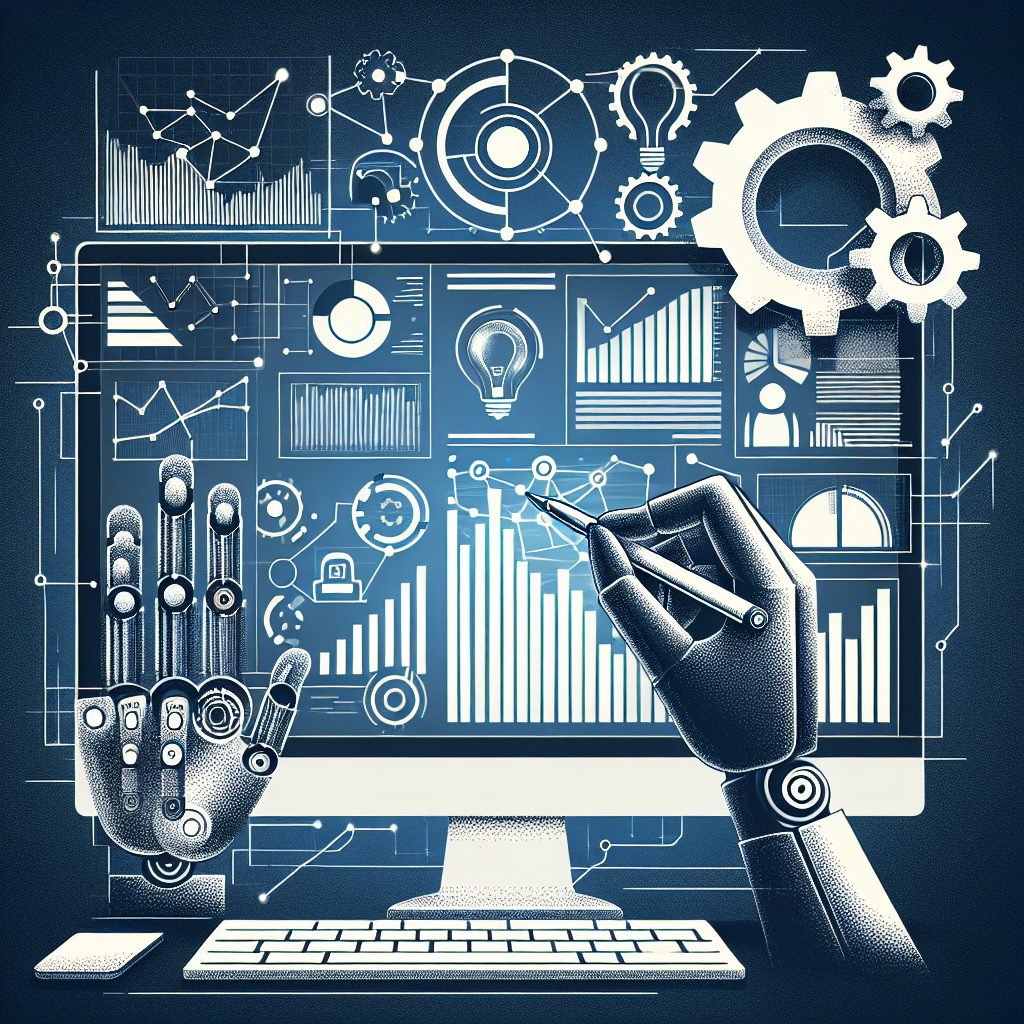In today’s digital age, the use of artificial intelligence (AI) and machine learning is becoming increasingly prevalent in various industries. One of the key areas where AI and machine learning are making a significant impact is in decision-making processes. By leveraging these technologies, organizations can analyze vast amounts of data, identify patterns, and make informed decisions more quickly and accurately than ever before.
The Role of AI and Machine Learning in Decision Making
AI and machine learning algorithms are designed to learn from data, recognize patterns, and make predictions or decisions based on that data. These technologies can be applied to a wide range of decision-making processes, from determining the best marketing strategy to identifying potential risks in financial investments. Here are some key ways in which AI and machine learning are transforming decision-making:
1. Data Analysis and Insights Generation: One of the primary roles of AI and machine learning in decision-making is to analyze large volumes of data to identify patterns and trends that humans may not be able to detect. By processing data at a much faster rate than humans, AI algorithms can provide valuable insights that can help organizations make more informed decisions.
2. Predictive Analytics: AI and machine learning algorithms are also capable of making predictions based on historical data. By analyzing past trends and patterns, these technologies can forecast future outcomes and help organizations anticipate potential risks or opportunities. This can be particularly useful in industries such as finance, healthcare, and retail where accurate predictions can lead to significant cost savings or revenue growth.
3. Personalized Recommendations: AI and machine learning algorithms are used to provide personalized recommendations to users based on their preferences and behavior. This is commonly seen in e-commerce platforms, where algorithms analyze customer data to suggest products that are likely to be of interest to individual users. By personalizing recommendations, organizations can improve customer satisfaction and drive sales.
4. Risk Management: AI and machine learning algorithms are also used in risk management to identify potential threats and mitigate risks. In the financial industry, for example, algorithms can analyze market data in real-time to detect anomalies and predict potential market crashes. By alerting organizations to these risks, AI and machine learning technologies can help prevent financial losses and protect assets.
5. Automation of Routine Decisions: Another key role of AI and machine learning in decision-making is the automation of routine decisions. By implementing algorithms that can make decisions based on predefined rules and criteria, organizations can streamline processes and free up human resources to focus on more complex tasks. This can lead to increased efficiency and cost savings for organizations.
FAQs
Q: How accurate are AI and machine learning algorithms in decision-making?
A: The accuracy of AI and machine learning algorithms in decision-making depends on various factors, such as the quality of data, the complexity of the problem, and the design of the algorithm. In general, these technologies can achieve high levels of accuracy when trained on large and diverse datasets. However, it is important to continuously monitor and evaluate the performance of AI algorithms to ensure that they are making reliable decisions.
Q: Are AI and machine learning algorithms biased?
A: AI and machine learning algorithms can be biased if they are trained on biased data. For example, if a dataset contains biased or discriminatory information, the algorithm may learn to make biased decisions. To address this issue, organizations should take steps to ensure that their data is diverse and representative of the population they are analyzing. Additionally, algorithms can be designed to detect and mitigate bias through techniques such as fairness-aware learning.
Q: How can organizations implement AI and machine learning in decision-making?
A: Organizations can implement AI and machine learning in decision-making by following a few key steps. First, they should identify the specific problem or opportunity they want to address with these technologies. Next, they should gather and clean relevant data to train the algorithms. Finally, organizations should develop and deploy the algorithms, monitor their performance, and continuously optimize them to improve decision-making outcomes.
Q: What are the limitations of AI and machine learning in decision-making?
A: While AI and machine learning offer many benefits in decision-making, there are also some limitations to consider. For example, these technologies may struggle with interpreting unstructured data or making decisions in highly complex or uncertain environments. Additionally, AI algorithms may lack transparency, making it difficult for humans to understand the rationale behind their decisions. Organizations should be aware of these limitations and take steps to address them when implementing AI and machine learning in decision-making processes.
In conclusion, AI and machine learning are playing an increasingly important role in decision-making across various industries. By leveraging these technologies, organizations can analyze data more efficiently, make accurate predictions, automate routine decisions, and improve overall decision-making processes. While there are challenges and limitations to consider, the benefits of AI and machine learning in decision-making are clear, and organizations that embrace these technologies are likely to gain a competitive advantage in the digital era.

